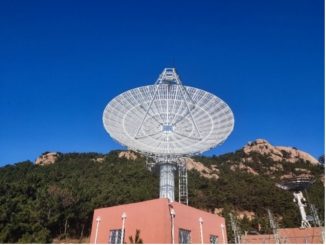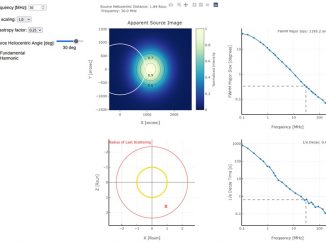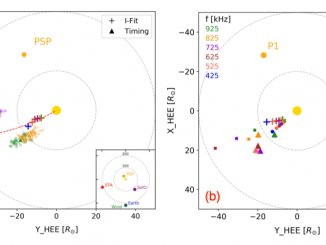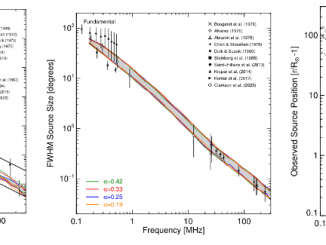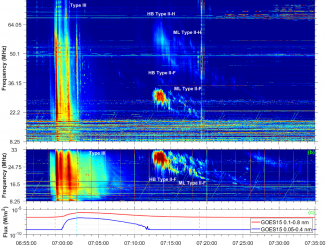The angular and frequency dependence of solar radio burst rise and decay times using multi-spacecraft observations by Nicolina Chrysaphi et al.
Density fluctuations populating the heliosphere interfere with propagating radio photons, altering their trajectories through frequency-dependent effects like scattering. Crucially, these density fluctuations are anisotropic, leading to anisotropic scattering and directional radio-wave propagation. This means that observers at different positions may obtain different estimations of radio properties. Such effects are particularly evident in solar radio bursts which are emitted through the plasma emission mechanism. It has been shown that detectors at […]




